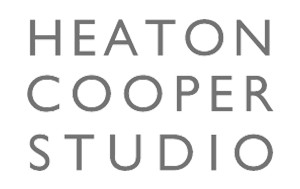In the week that he opens another new exhibition in the Lakes, Britain’s leading mountain painter Julian Cooper has been presented with a top award.
He received the accolade of Visual Artist of the Year at a ceremony at Rheged organised by the Cumbria Life Culture Awards, sponsored by the Arts Council and the University of Cumbria. The judges described Julian Cooper as “as a Titan among painters”.
Julian Cooper is the son of William Heaton Cooper, grandson of Alfred Heaton Cooper, both eminent of Lake District artists. His mother was the sculptor Ophelia Gordon Bell. His latest venture is the exhibition Unpicturesque which is opening at the Heaton Cooper Studio archive gallery and includes two of his own monumental works.
His paintings today reflect an un-traditional view of his Lake District landscape but his work is known and respected throughout the world. Where his forebears produced traditional views of the hills and lakes, Julian’s paintings involve close encounters, sometimes with barren, inhospitable places. He has visited some of the most hostile, awe-inspiring terrain on the planet: the Andes, Himalayas, Alps, Tibet, Carrara and Tasmania and made paintings that do justice to nature at its wildest.
But his native Lake District is the bedrock of his practice, his true territory. His work shows a strong desire to reach beyond appearance and uncover the underlying structure and essence of the place. Melvyn Bragg has said of Julian: “He has taken the skin, the pelt, off the landscape. He has uncovered the nerve, the bones, the innards. He has gone further than anyone has gone before, with consistency, determination and flair. He has given us work of quiet magnificence and infinite subtle variety. His talent is prodigious.”
No introspective artist concentrating only on his own work, Julian encourages young aspiring artists, curating exhibitions of their work, including Stefan Orlowski, Tessa Lyons, and Henry Iddon’s photographic exhibition, Hill People. Shows like these are staged each year as curtain-raiser to the Kendal Mountain Festival. This week sees the opening of his latest curated exhibition Unpicturesque, bringing artists together in a critical stand against the “picturesque” view of the Lakes.
“How we see profoundly affects the way we think, and seeing this and other landscapes as beyond ‘scenery’ and more as a dynamic layering of natural and human systems, all connecting to each other, may help in adjusting our attitudes to the benefit of all who live and visit here, whether they be human or non-human,” he says.

Julian Cooper’s two works on show will include his earlier paintings of abandoned slate quarries, a subject which was part of his exploration of mountains and rock-faces. In Torver Quarry the wall of sun-dappled rock leads down to the dark entrance of a cave, with band of coloured iron oxide running across the bedding layer, suggesting fracture and instability. The painting Overhangs, Hodge Close Quarry tries to convey the subtle abstract conjunctions of form and colour of rough and smooth slate typical of old Lakeland quarry walls.
Other artists represented are Martin Greenland, Alan Stones, Rebecca Scott and Alan Thompson. There are also photographs by John and Rosamond Macfarlane, whose son is Robert Macfarlane, the internationally bestselling, prize-winning author of Landmarks, The Lost Words and The Old Ways and whose latest work, Underland, has just been published.

